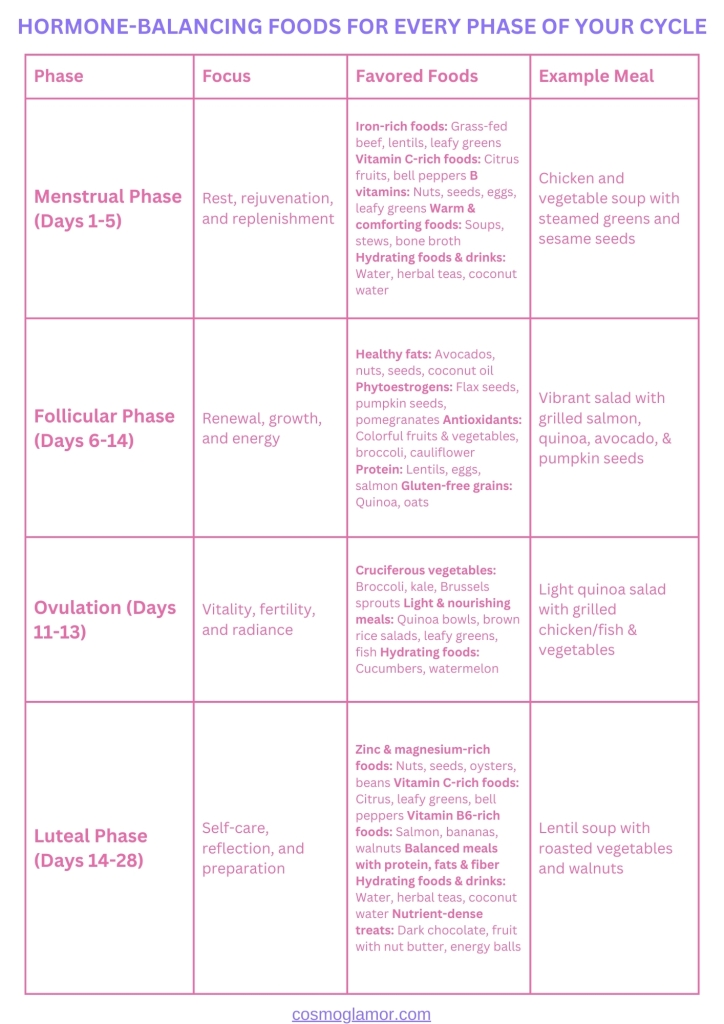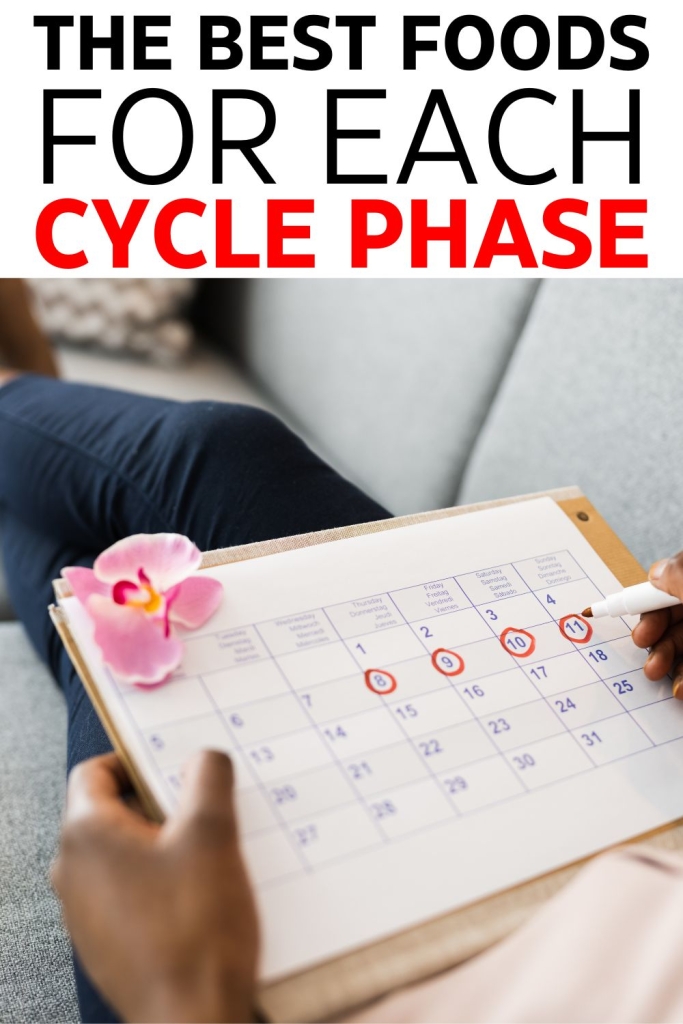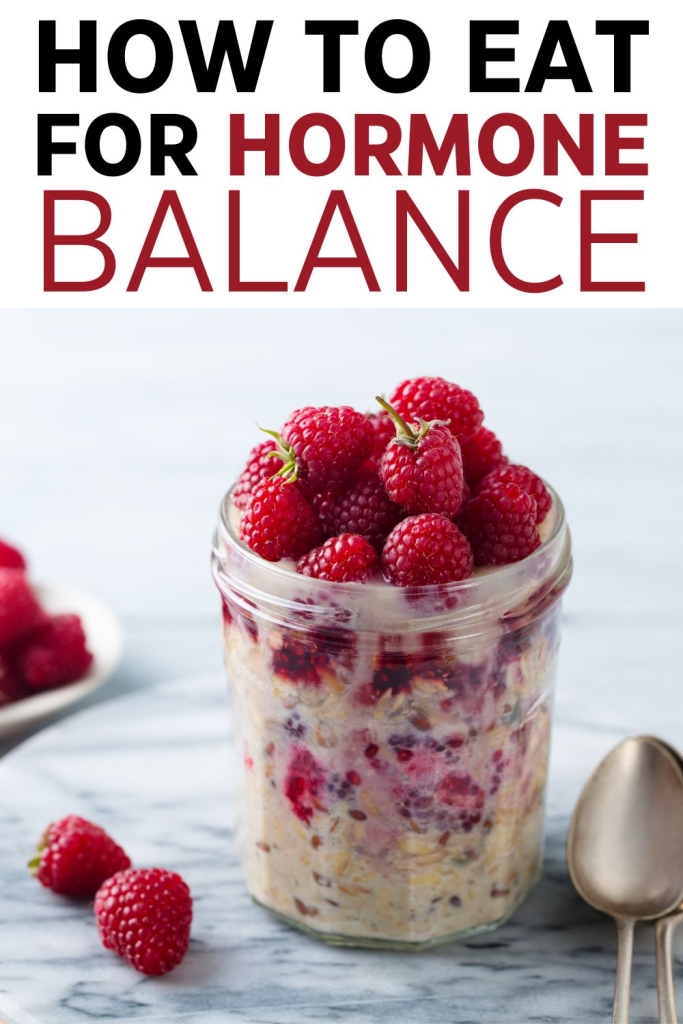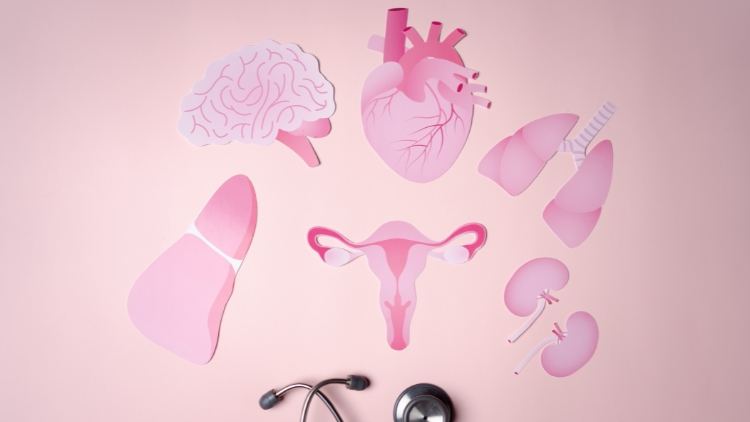Are you a slave to your cycle?
Let's be honest, most of us have viewed our periods as a monthly burden, an inconvenient disruption, or even something to dread. We've been conditioned to feel like victims of our own bodies, powerless against the hormonal rollercoaster that dictates our moods, energy levels, and even our cravings.
But what if I told you that you have more control than you think? By understanding the intricate dance of hormones throughout your menstrual cycle and aligning your diet with each phase, you can reclaim your power and experience a more balanced, vibrant, and empowered cycle.
Why Eating for Your Cycle Matters
Food is your hormonal foundation.
Your brain and body are in constant communication, orchestrated by your hormones. The foods you eat provide the essential building blocks and fuel for hormone production and overall bodily function. When your diet falls short on nutrients, your body prioritizes stress hormones for survival, leading to hormonal imbalances and a cascade of unpleasant symptoms.
A balanced, nutrient-rich diet is your secret weapon for achieving hormonal equilibrium and a smoother cycle. Ever noticed those fluctuating cravings or changes in appetite throughout the month? That's your body's way of signaling its shifting nutritional needs. By nourishing yourself with the right foods at each phase, you can optimize your hormonal symphony and feel your best all month long.

Nurturing Your Menstrual Phase (Days 1-5)
Think of this as the “winter” of your cycle—a time for rest, rejuvenation, and surrender. Your energy levels may be lower, and you might feel more introspective and withdrawn. Embrace this inward focus as an opportunity for self-care and reflection.
What's Happening Behind the Scenes
- Progesterone and estrogen levels plummet, triggering the shedding of your uterine lining.
- You may experience cramps, fatigue, and other physical discomforts.
- Your body is working hard to cleanse and renew itself, preparing for a new cycle.
Fuel Your Menstrual Phase
- Replenish and Restore: Prioritize iron-rich foods like grass-fed beef, lentils, and leafy greens to replenish iron lost during menstruation. Pair these with vitamin C-rich foods like citrus fruits and bell peppers to enhance iron absorption.
- Boost Energy Levels: Combat fatigue with foods rich in B vitamins, like nuts, seeds, eggs, and leafy greens. These nutrients support energy production and help you feel more vibrant.
- Warm and Comforting Foods: Embrace nourishing soups, stews, and bone broth to soothe your body and soul. These warm, easily digestible foods provide comfort and support during this phase of release.
- Hydration and Electrolytes: Stay hydrated with plenty of water and herbal teas. Incorporate electrolyte-rich foods like coconut water and bananas to help replenish minerals lost during menstruation.
Example Menstrual Phase Meal: A comforting bowl of chicken and vegetable soup with a side of steamed greens and a sprinkle of sesame seeds for an iron and mineral boost
Remember: Your menstrual phase is a sacred time for rest and renewal. Honor your body's need for slowing down and prioritize self-care. Nourish yourself with gentle, warming foods, and allow yourself the space to rest and recharge.
Pro Tip: Consider incorporating gentle movement like yoga or walking into your routine during your period. This can help ease cramps, improve circulation, and boost your mood. Listen to your body and choose activities that feel good.
Nourishing Your Follicular Phase (Days 6-10)
Think of this as the “springtime” of your cycle. While the follicular phase technically starts from Day 1 of your cycle, we focus here on the days following menstruation when your body is gearing up for the possibility of a new life. Estrogen and testosterone levels are on the rise, gradually awakening your energy, mood, and mental clarity. You'll likely feel more social, motivated, and even a little frisky as your libido starts to rev up!
What's Happening Behind the Scenes:
- Your pituitary gland releases Follicle Stimulating Hormone (FSH), prompting your ovaries to prepare an egg for ovulation.
- Estrogen levels steadily increase, thickening your uterine lining in anticipation of a possible pregnancy.
- Your cervix softens and produces fertile cervical fluid, creating a welcoming environment for sperm.
Fuel Your Follicular Phase:
- Embrace Healthy Fats: Think avocados, nuts, seeds, coconut oil, and grass-fed butter or ghee. These fats support hormone production, regulate your appetite, and provide the energy your body needs to nurture a maturing egg.
- Phytoestrogen Power: Incorporate foods like flax seeds, pumpkin seeds, and pomegranates to support healthy estrogen levels.
- Antioxidant Boost: Load up on colorful fruits and vegetables packed with vitamin C and sulfur-rich veggies like broccoli and cauliflower. These antioxidants combat oxidative stress and support detoxification, setting the stage for a healthy ovulation.
- Nutrient-Dense Foundation: Prioritize protein sources like lentils, eggs, and salmon, along with gluten-free grains like quinoa and oats. These provide essential vitamins and minerals to support egg development and rebuild your uterine lining.
Example Follicular Phase Meal: A vibrant salad with leafy greens, grilled salmon, quinoa, avocado slices, and a sprinkle of pumpkin seeds, dressed with a lemon vinaigrette.
Remember: The follicular phase is a time of renewal and growth. By nourishing your body with the right foods, you can support healthy hormone production, optimize egg quality, and prepare your body for the possibility of conception. Listen to your body's hunger cues and prioritize whole, nutrient-dense foods to feel your best during this phase.
Pro Tip: Consider incorporating seed cycling into your follicular phase routine. Try adding a tablespoon of ground flax seeds to your morning smoothie or oatmeal for an extra estrogen-balancing boost!
Embracing Ovulation (Days 11-13)
This is your “summer” phase – a vibrant, energetic time when your body is primed for fertility. Estrogen and testosterone peak, boosting your confidence, sex drive, and overall radiance. You might feel more outgoing, adventurous, and even find yourself glowing a bit more than usual!
What's Happening Behind the Scenes:
- A surge of Luteinizing Hormone (LH) triggers the release of a mature egg from your ovary.
- Your cervix rises, softens, and opens, creating an optimal pathway for sperm.
- Fertile cervical fluid increases, further aiding sperm on their journey.
Fuel Your Ovulation Phase
- Liver-Loving Foods: Embrace cruciferous vegetables like broccoli, kale, and Brussels sprouts. They support your liver in detoxifying excess estrogen, ensuring a healthy hormonal balance.
- Light & Nourishing Choices: Opt for light, nutrient-rich meals like quinoa bowls, brown rice salads, leafy greens, and cold-water fish. Your appetite might be naturally suppressed during this phase as your body focuses its energy on the potential for conception.
- Hydration is Key: Drink plenty of water and enjoy hydrating fruits and vegetables like cucumbers and watermelon. This will help offset any potential bloating or water retention caused by hormonal fluctuations.
Example Ovulation Phase Meal: A light and refreshing quinoa salad with grilled chicken or fish, plenty of colorful vegetables, and a drizzle of olive oil and lemon juice.
Remember: Ovulation is a celebration of your feminine power and fertility! Embrace this energetic phase by nourishing yourself with light, vibrant foods that support detoxification and maintain your vitality. Listen to your body's cues and honor its natural rhythms.
Pro Tip: Consider incorporating seed cycling into your ovulation phase routine by adding a tablespoon of ground sunflower or pumpkin seeds to your meals or snacks. These seeds are rich in zinc and vitamin E, which can support progesterone production in the next phase.
Thriving in the Luteal Phase (Days 14-28)
Consider this the “autumn” of your cycle. It's a time of winding down, introspection, and preparation. Progesterone takes center stage, nurturing the uterine lining in case of pregnancy. If conception doesn't occur, hormone levels gradually decline, leading to the shedding of the lining during your period.
What's Happening Behind the Scenes:
- Progesterone rises, promoting the growth and thickening of the uterine lining.
- Cervical fluid becomes thicker and drier, creating a less hospitable environment for sperm.
- You may experience a shift in mood, feeling more introspective and less social.
- Towards the end of this phase, if pregnancy doesn't occur, estrogen and progesterone levels drop, triggering menstruation.
Fuel Your Luteal Phase
- Progesterone-Boosting Foods: Embrace foods rich in zinc and magnesium, like nuts, seeds, oysters, and beans. Also, load up on vitamin C-rich fruits and vegetables, along with B6-rich foods like salmon, bananas, and walnuts. These nutrients work synergistically to support healthy progesterone levels.
- Blood Sugar Balance: Progesterone can cause blood sugar dips, potentially contributing to mood swings and cravings. Aim for consistent, balanced meals with protein, healthy fats, and fiber to keep your blood sugar stable and your mood even.
- Hydration and Electrolytes: Water retention is common during this phase. Drink plenty of water and consume hydrating fruits and vegetables like cucumbers and celery. Consider adding a pinch of sea salt to your water or enjoying coconut water for an electrolyte boost.
- Nutrient-Dense Treats: Combat sugar cravings with healthier options that still satisfy your sweet tooth. Think dark chocolate, fruit with nut butter, or homemade energy balls.
Example Luteal Phase Meal: A hearty and grounding bowl of lentil soup with a side of roasted vegetables and a handful of walnuts for a satisfying and nutrient-rich meal.
Remember: The luteal phase is a time for self-care and reflection. Honor your body's natural rhythms by slowing down, prioritizing rest, and nourishing yourself with warming, comforting foods.
Pro Tip: If you experience PMS symptoms, consider supplementing with magnesium and vitamin B6. These nutrients can help alleviate mood swings, bloating and breast tenderness. Always consult with your healthcare provider before starting any new supplements.
Conclusion
Your menstrual cycle is a powerful, intricate dance of hormones, and by understanding its rhythms, you can reclaim your power and embrace each phase with grace and vitality. Food is not just fuel; it's a potent tool for supporting hormonal balance, reducing PMS symptoms, and optimizing your overall well-being.
Remember, this is a journey of self-discovery and empowerment. As you begin to align your diet with your cycle, pay close attention to your body's unique responses. What foods make you feel energized and vibrant? Which ones leave you feeling sluggish or bloated? Embrace this knowledge to fine-tune your approach and create a personalized roadmap for hormonal harmony.
Key Takeaways:
- Your menstrual cycle is a reflection of your overall health and hormonal balance.
- Nourishing your body with the right foods at each phase can support optimal hormone production and reduce PMS symptoms.
- Embrace the unique qualities of each phase and adjust your lifestyle accordingly.
- Listen to your body's wisdom and honor its natural rhythms.
- Celebrate the power and beauty of your feminine cycle!
Remember: You are not a victim of your hormones. By making mindful choices about what you eat and how you care for yourself, you can create a more balanced, joyful, and empowered cycle.



Resources:
- Changes in macronutrient and micronutrient intake throughout the menstrual cycle in healthy, premenopausal women.
- Premenstrual syndrome.
- A weight-loss program adapted to the menstrual cycle increases weight loss in healthy, overweight, premenopausal women: a 6-mo randomized controlled trial.
- Menstrual cycle phase affects the relationship between dietary intake and exercise in healthy, young women.




